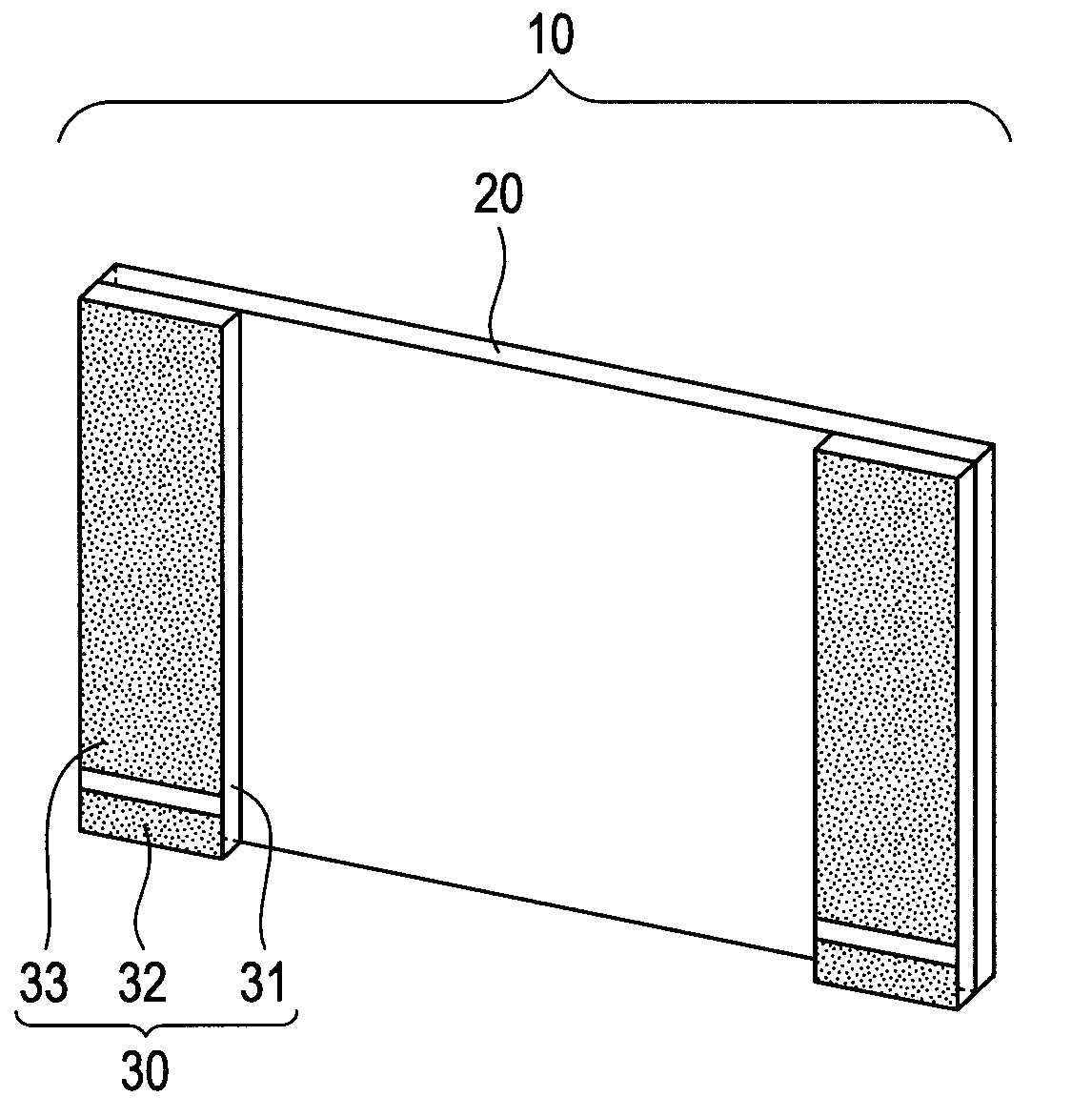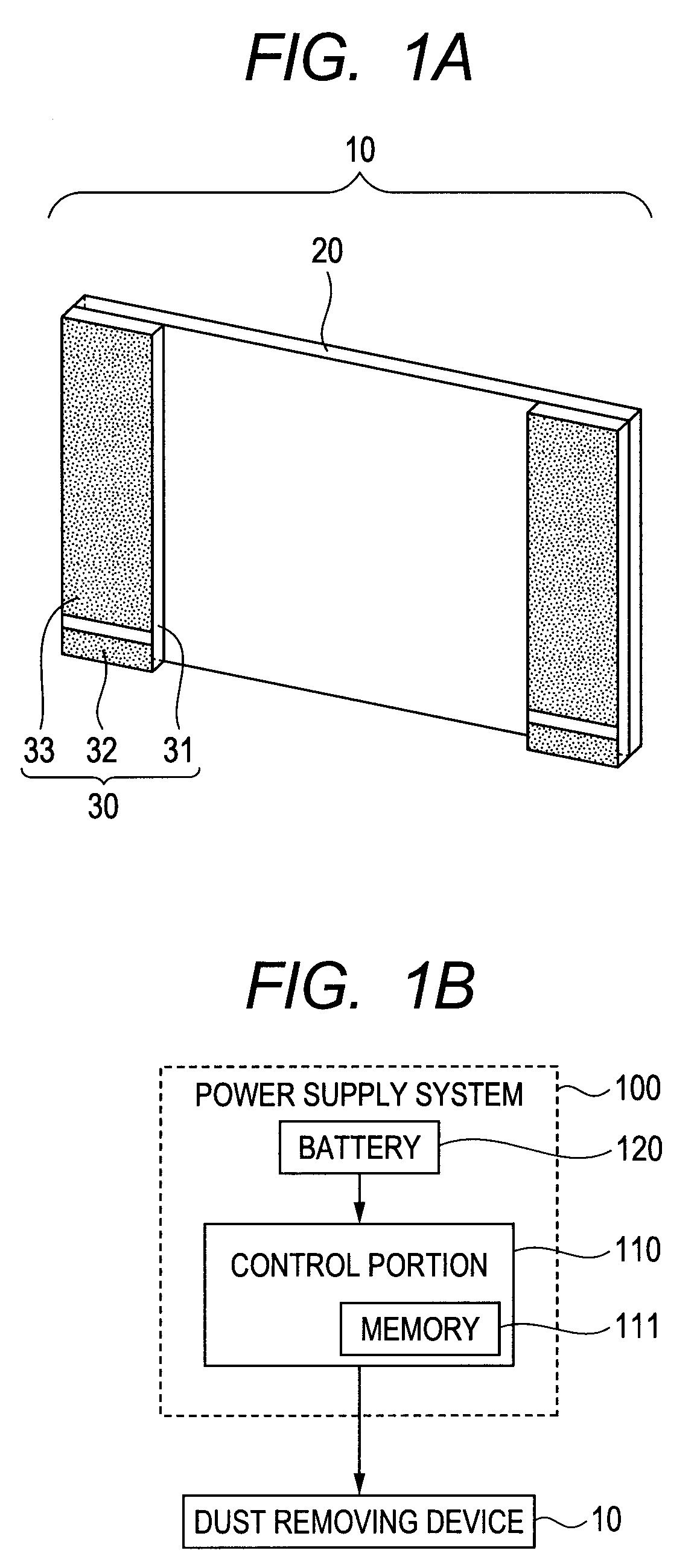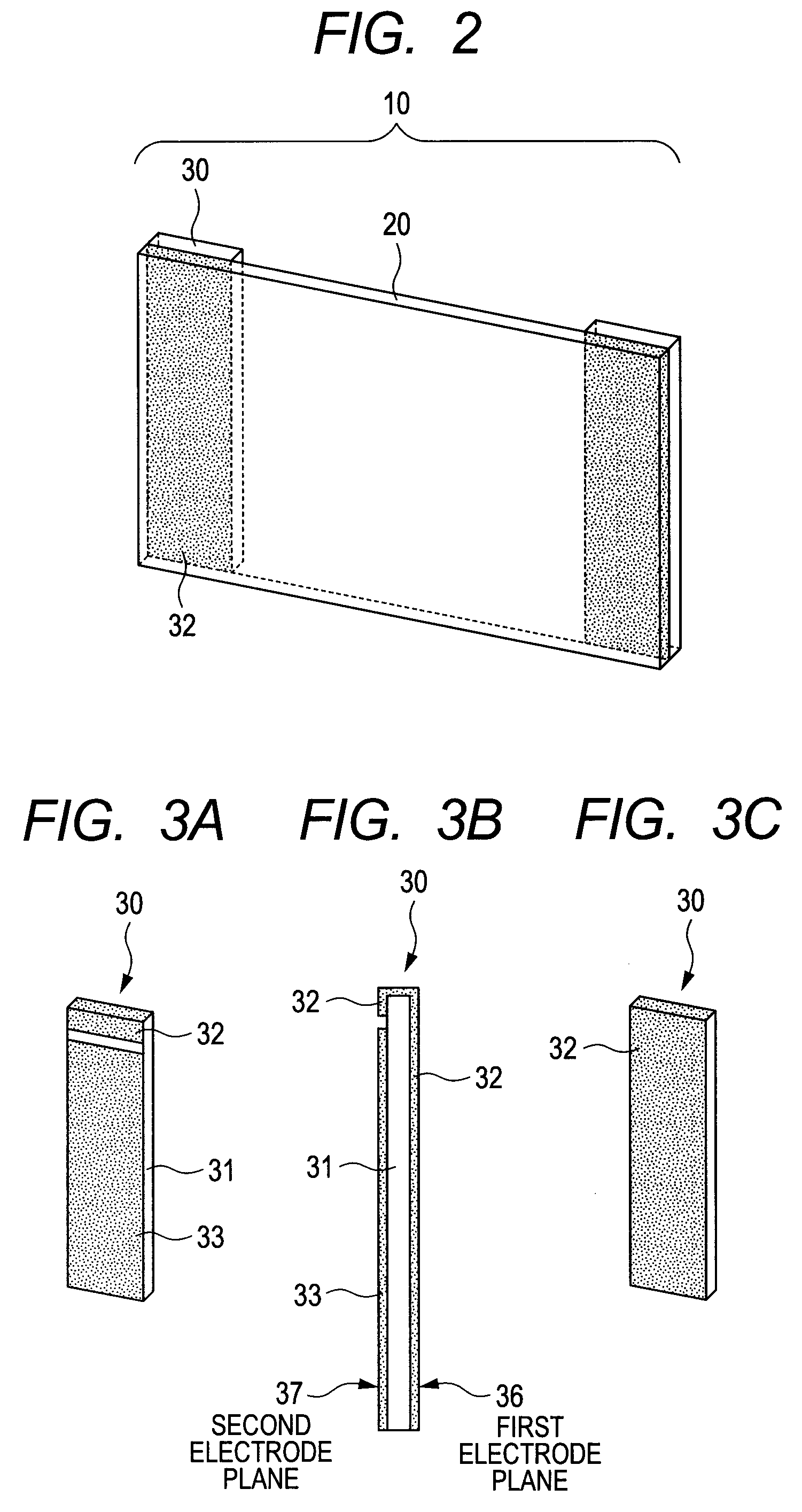Dust removing device and dust removing method
a technology of dust removal device and dust removal method, which is applied in the direction of mechanical vibration separation, cleaning using liquids, camera filters, etc., can solve the problems of the length vibration to be generated in the piezoelectric device, and the inability to realize lead-free material having various properties equivalent to those of pzt, etc., to achieve high dust removal performance, easy to fix, and efficiently utilize the displacement capability inherent in
- Summary
- Abstract
- Description
- Claims
- Application Information
AI Technical Summary
Benefits of technology
Problems solved by technology
Method used
Image
Examples
example 1
[0095]In the following, the dust removing device of the present invention is specifically described with reference to Examples. However, the present invention is not limited by the following Examples.
[0096]First, a method of manufacturing the piezoelectric device of the present invention is described. Barium titanate particles with an average particle diameter of 100 nm (manufactured by Sakai Chemical Industry Co., Ltd., BT-03 as a trade name) were coated with manganese acetate (II) by using a spray dryer. According to inductively coupled plasma (ICP) mass spectrometry, the powder mix had a manganese content of 0.12% by mass.
[0097]Next, the powder mix was added with a polyvinyl alcohol aqueous solution at a concentration of 5% by mass, as a dispersant. The additive amount was determined so that polyvinyl alcohol in the polyvinyl alcohol aqueous solution was 3% by mass with respect to the powder mix. The mixture was mixed in a mortar, to thereby manufacture a granulated powder mix. T...
example 2
[0104]By using a method similar to that of Example 1, the dust removing device of Example 2 of the present invention was formed similarly to Example 1, except in that the two piezoelectric devices of the present invention were further provided, as illustrated in FIG. 1A, along both sides of 33.7 mm of a glass plate having a function of an infrared cut filter. The two piezoelectric devices were disposed so that the polarization directions were opposed to each other.
[0105]In order to confirm the effect of Example 2, frequency response calculation based on a finite element method was performed in a range from 125 kHz to 145 kHz, on conditions similar to those of Example 1, except in that the restraint conditions were provided as (1) the second electrode planes of the two piezoelectric devices were fixed, (2) the piezoelectric device was applied with a voltage of 10 V across the upper surface and the lower surface, and (3) the two piezoelectric devices were applied with voltages in the ...
example 3
[0111]As illustrated in FIG. 15, a flexible wiring cable 90 was bonded through a conductive epoxy resin adhesive to a part of the second electrode plane of the piezoelectric device forming the dust removing device of Example 2, so as to allow a voltage to be applied thereto from a power supply via the flexible wiring cable 90. Next, the dust removing device configured as described above was fixed, through the second electrode plane of the piezoelectric device, to a stainless-steel support member, along with the portion of the flexible wiring cable being in contact with the piezoelectric device. Further, an alternating voltage of 15 Vpp was applied to the first electrode and the second electrode of the piezoelectric device via the flexible wiring cable from a power supply, to thereby manufacture a dust removing device unit capable of repeatedly vibrating in a 17th order vibration mode and in an 18th order vibration mode. Various plastic beads for evaluating the dust removal rate were...
PUM
 Login to View More
Login to View More Abstract
Description
Claims
Application Information
 Login to View More
Login to View More - R&D
- Intellectual Property
- Life Sciences
- Materials
- Tech Scout
- Unparalleled Data Quality
- Higher Quality Content
- 60% Fewer Hallucinations
Browse by: Latest US Patents, China's latest patents, Technical Efficacy Thesaurus, Application Domain, Technology Topic, Popular Technical Reports.
© 2025 PatSnap. All rights reserved.Legal|Privacy policy|Modern Slavery Act Transparency Statement|Sitemap|About US| Contact US: help@patsnap.com



